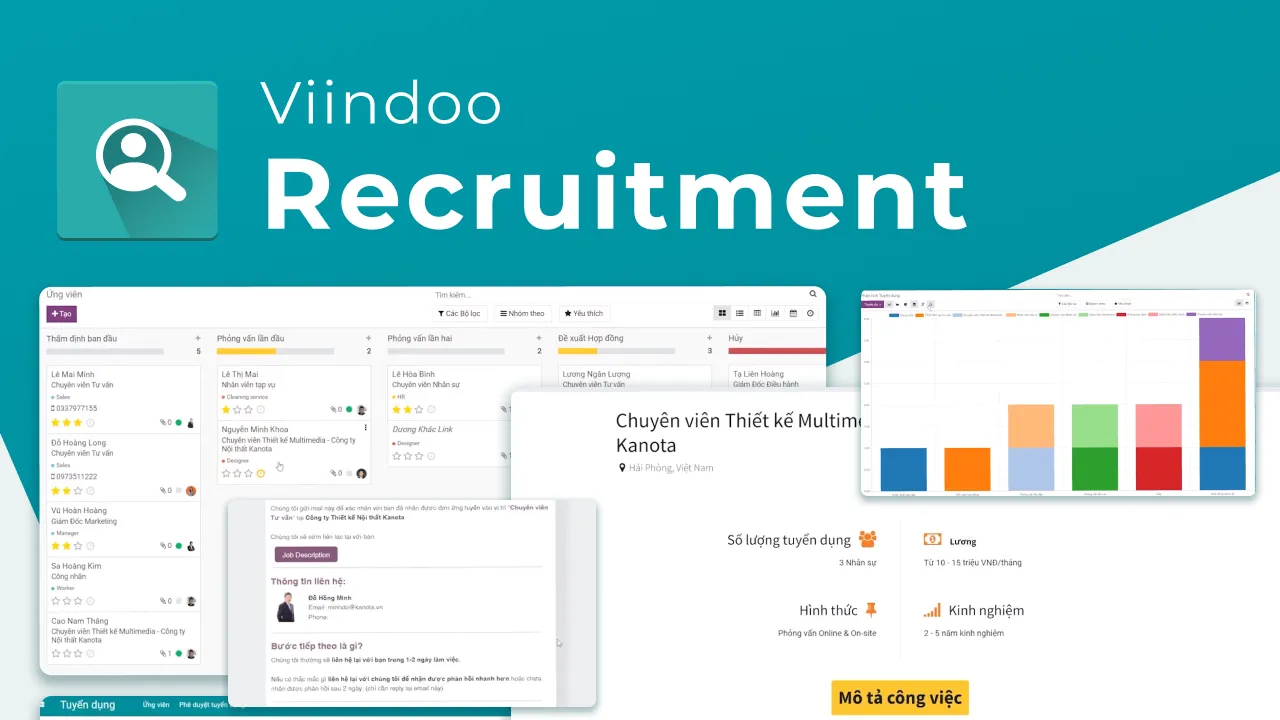Talent acquisition strategy is a critical component of any organization's success, as it helps organizations acquire top talent and maintain a competitive edge in the market. In this article, we will discuss what a talent acquisition strategy is, what makes a good acquisition strategy, what methodology or framework to build a talent acquisition strategy, how technology can support businesses in building a talent acquisition strategy, and more.
What is a Talent Acquisition Strategy?
A talent acquisition strategy is a comprehensive plan that outlines an organization's approach to identifying, attracting, and hiring top talent. This strategy takes into account the organization's goals, values, culture, and the skills and experience required for each position. A well-crafted acquisition strategy enables organizations to build a strong employer brand, attract high-quality candidates, reduce recruitment costs and time-to-hire, and improve overall recruitment efficiency.

Talent Acquisition Strategy Definition
What Makes a Good Acquisition Strategy?
An effective acquisition strategy should focus on the following key elements:
Alignment with Business Goals: The acquisition strategy should align with the organization's overall business goals and objectives. It should be designed to address the specific talent needs of the organization and support its long-term growth and success.
Talent Mapping and Segmentation: Organizations should evaluate their current talent pool and identify gaps in skills and experience to map their future talent needs. Through talent segmentation, recruiters can categorize candidates based on job roles, skills, and experience levels to develop targeted recruitment campaigns.
Employer Branding and Candidate Experience: A strong employer brand is crucial to attracting and retaining top talent. Recruiters should build a compelling employer brand by showcasing the organization's culture, values, and employee testimonials. A positive candidate experience throughout the recruitment process can also help to improve the employer's brand and attract top talent.
Talent Acquisition Metrics: To measure the effectiveness of the talent acquisition strategy, recruiters should track key performance indicators such as time-to-hire, cost-per-hire, and quality-of-hire. This enables organizations to continuously evaluate and refine their recruitment processes.
Methodology or Framework to Build a Talent Acquisition Strategy
There are several methodologies and frameworks that organizations can use to build an effective talent acquisition strategy. The following states out three most widely recognized frameworks:
Talent Acquisition Funnel
This model breaks down the recruitment process into stages, similar to a sales funnel, allowing for a systematic approach to attracting, evaluating, and hiring candidates.

Talent Acquisition Funnel
Here are the key stages of the Talent Acquisition Funnel:
Awareness: At this stage, the goal is to make potential candidates aware of the organization and its job openings. This can be achieved through employer branding, social media, job postings, and networking.
Interest: Once candidates are aware of the organization, efforts are made to pique their interest in the available positions. This may involve providing detailed job descriptions, showcasing the company culture, and highlighting benefits.
Consideration: Candidates in this stage are seriously considering applying for a position. They may be researching the company, evaluating the job requirements, and comparing it to their own skills and aspirations.
Application: This is the point at which candidates formally apply for a position. The application process should be user-friendly and efficient.
Evaluation: In this stage, recruiters and hiring managers assess candidates based on their resumes, interviews, assessments, and other relevant information.
Offer: After the evaluation process, the organization extends an offer to the chosen candidate. This includes details about compensation, benefits, and other terms of employment.
Acceptance: The candidate accepts the offer and becomes a new employee of the organization.
Onboarding: The new employee goes through the onboarding process, which includes orientation, training, and integration into the company culture.
>>>> See also: How to apply Talent Acquisition Funnel in Viindoo Recruitment Software
EVP-centered approach
The EVP stands for Employee Value Proposition, which is a set of unique benefits and offerings that an organization provides to its employees in exchange for their skills, expertise, and commitment. This approach emphasizes the value and benefits that potential employees can gain by working for the organization. It involves understanding what motivates candidates and tailoring recruitment efforts to highlight these aspects.

Employee Value Proposition
Here are some key components of an EVP:
Compensation and Benefits: This includes salary, bonuses, healthcare, retirement plans, and other tangible rewards.
Career Development: Opportunities for growth, training, mentorship, and advancement within the organization.
Work-Life Balance: Policies and practices that support employees in achieving a healthy balance between work and personal life.
Company Culture and Values: The organization's mission, vision, and values, as well as the overall workplace environment and atmosphere.
Recognition and Rewards: Acknowledgment of employees' contributions and efforts through formal or informal recognition programs.
Workplace Flexibility: Options for remote work, flexible hours, or alternative work arrangements.
Job Security and Stability: Assurance of a stable work environment and opportunities for long-term employment.
Employee Well-being and Health: Initiatives that support physical, mental, and emotional well-being, such as wellness programs and mental health resources.
Inclusion and Diversity: Efforts to create an inclusive and diverse workplace where all employees feel valued and respected.
Social Responsibility and Impact: Commitment to corporate social responsibility and making a positive impact on the community or society as a whole.
This illustrates how an EVP can encompass various aspects of the employee experience, from tangible rewards to intangible cultural elements that contribute to a compelling work environment. Organizations need to articulate and communicate their EVP effectively to attract and retain top talent. Here are the crucial elements of an effective EVP-centered talent acquisition strategy:
Research and Understanding: Conduct thorough research to understand what matters most to potential candidates in your industry and region. This may involve surveys, focus groups, or market research.
Customization for Target Audiences: Tailor your EVP to appeal to different segments of your target talent pool. For example, recent graduates may value career development opportunities, while experienced professionals may prioritize work-life balance.
Clear Articulation: Communicate the unique benefits and experiences that set your organization apart. This should be reflected in job postings, recruitment materials, and conversations with candidates.
Alignment with Branding and Messaging: Ensure that the EVP aligns with your organization's overall branding and messaging. It should be consistent across all touchpoints, from the company website to social media channels.
Incorporate Employee Testimonials: Use testimonials or success stories from current employees to showcase the real-life experiences and benefits of working for your organization.
Highlight Organizational Culture and Values: Emphasize the company's mission, vision, and values, and demonstrate how they are integrated into day-to-day operations.
Employee Well-being and Growth Opportunities: Showcase opportunities for career advancement, skill development, and personal growth. Highlight programs, training, and mentorship initiatives.
Showcase Unique Perks and Benefits: Highlight any special perks or benefits that your organization offers, such as wellness programs, flexible work arrangements, or unique office spaces.
Measure and Adapt: Continuously monitor the effectiveness of your EVP-centered approach. Gather feedback from candidates and employees to understand what resonates and make adjustments as needed.
Overall, an EVP-centered approach helps organizations create a compelling narrative that resonates with potential candidates and sets them apart in a competitive job market. It's a powerful tool for attracting and retaining top talent.
Balanced Scorecard framework
The Balanced Scorecard framework is a strategic management tool that helps organizations align their activities with their vision and strategy. It involves identifying and tracking key performance indicators (KPIs) in four categories: Financial, Customer, Internal Processes, and Learning and growth. When applied to talent acquisition, it provides a structured way to measure and manage recruitment efforts to ensure they align with organizational goals.

Balanced Scorecard Framework for Talent Acquisition
Here's how the Balanced Scorecard framework can be adapted for creating a talent acquisition strategy:
Financial Perspective: In the context of talent acquisition, this category focuses on measuring the financial impact of recruitment efforts. This could include metrics like cost-per-hire, return on investment (ROI) of recruitment activities, and the impact on overall organizational profitability. Some example KPIs include Cost-per-hire, Revenue generated per new hire, and Recruitment cost as a percentage of the total HR budget.
Customer Perspective: In talent acquisition, the "customer" can be both internal (hiring managers and departments) and external (candidates). This category assesses how well recruitment efforts are meeting the needs and expectations of these stakeholders. Examples of the key metrics include Hiring manager satisfaction scores, Candidate experience ratings, and Time-to-fill positions to meet business needs.
Internal Processes Perspective: This category focuses on the efficiency and effectiveness of the recruitment process itself. It evaluates how well recruitment processes are aligned with organizational objectives and whether they are streamlined for maximum effectiveness. This can be assessed by Time-to-fill positions, Interview-to-offer ratio, or Quality of hire (e.g., retention rates and performance evaluations).
Learning & Growth Perspective: This category addresses the development and improvement of the talent acquisition team itself. It includes training, skill-building, and the adoption of new technologies or best practices to enhance recruitment capabilities. Some key metrics to measure this include Training hours per recruiter, Adoption rate of new recruitment technologies, Recruiter satisfaction, and engagement scores.
Remember that the most effective talent acquisition strategy will be unique to and depending on each organization and should be aligned with its specific goals, culture, and industry. These methodologies and frameworks provide a structured approach to building a tailored strategy for your business.
How Can Technology Support Businesses in Building a Talent Acquisition Strategy?
Technology can play a crucial role in supporting businesses in building a talent acquisition strategy. The following are some ways in which technology can be used to enhance recruitment processes:
Social Media Recruitment: Social media platforms like LinkedIn, Facebook, and Twitter provide recruiters with an opportunity to connect with potential candidates and showcase the organization's brand.
Applicant Tracking Systems (ATS): ATS software can help recruiters manage the recruitment process from job posting to onboarding. It enables recruiters to track candidates, schedule interviews, and automate communication.

Example of Applicant Tracking System: Viindoo Recruitment Software
Artificial Intelligence (AI) and Machine Learning: AI-powered tools can help recruiters analyze resumes, screen candidates, and conduct assessments. These tools can reduce the time-to-hire and improve the accuracy of candidate selection.
Video Interviewing: Video interviewing technology allows recruiters to conduct virtual interviews with candidates from anywhere in the world, reducing recruitment costs and time-to-hire.
FAQs
What is the difference between talent acquisition and recruitment?
Talent acquisition is a strategic approach to identifying and attracting top talent that aligns with an organization's long-term goals, while recruitment refers to the process of filling specific job openings in the short term.
How can organizations build a strong employer brand?
Organizations can build a strong employer brand by showcasing their culture, values, and employee testimonials through various channels such as social media, career websites, and employee engagement programs.
How can technology help to improve recruitment processes?
Technology solutions like ATS software, social media platforms, and AI-powered tools can help to automate recruitment processes, reduce time-to-hire, and improve the accuracy of candidate selection.
What are some key metrics to track in talent acquisition?
Key metrics to track in talent acquisition include time-to-hire, cost-per-hire, quality-of-hire, and applicant conversion rates.
How can organizations retain top talent?
Organizations can retain top talent by providing competitive compensation packages, offering growth and development opportunities, promoting work-life balance, and fostering a positive workplace culture.
Conclusion
A well-crafted talent acquisition strategy is critical to an organization's success in today's competitive job market. By developing a comprehensive acquisition strategy that aligns with business goals, focuses on employer branding and candidate experience, leverages technology, and continuously evaluates and refines recruitment processes, organizations can attract and retain top talent and maintain a competitive edge. In summary, an effective talent acquisition strategy is a key component of any organization's success in the current job market.
Experience the FREE Viindoo ATS now!
Getting started with the best Applicant Tracking System for your successful Talent Acquisition Strategy.

